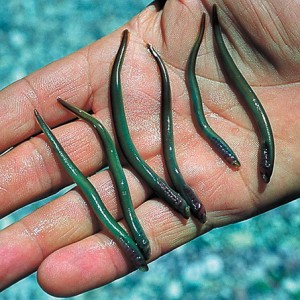
We’re here one more time with the Marine Biological Laboratory. We’ve already told you all about the work scientists are doing with the Xenopus, but there’s one other interesting laboratory located at the MBL, too. The lab run by Dr. Jennifer Morgan opened in June of 2012, and is studying the lamprey, the jawless fish. The lamprey is a very early evolved vertebrate with no true bones.
What’s so cool about a lamprey? If you transect the spinal cord of a lamprey, it will spontaneously regain the ability to start swimming around again. After only eleven weeks of recovery, the spinal transected lamprey looks almost exactly the same as an uninjured, control lamprey. Some marine organisms are really good at regeneration, and the lamprey specifically has a better ability to recover from spinal cord injury than a human has. Also, even though lampreys are much lower on the evolutionary ladder than we are, they are true vertebrates and they have a nervous system with features that are analogous to that found in a human.
What happens in a human when the spinal cord is cut? In humans, spinal cord injury induces damage to the neurons and glial cells in the nervous system. The glial cells form scar tissue at the injury site, and they also release molecules that tell the neurons to stop growing. In addition, other neurons die or lose their connections, thereby paralyzing the human. Animal models have demonstrated that if you take a peripheral nerve and create a bridge for the spinal cord neurons , the spinal cord neurons can actually grow. This means that the environment surrounding the spinal cord neurons is very important for determining whether these neurons can regenerate. This is controlled, at least in part, by the actual gene expression.
The lamprey not only has a very similar nervous system, but the genes that it expresses are similar to that of a human. If the gene sequences that enable regeneration can be identified in a lamprey, it is possible that they can be isolated in a human as well. Finding these key genes that support regeneration could therefore one day help those who have suffered paralyzing brain and spinal cord injuries.
Using marine models for research that could help humans is an important goal of the MBL. In the case of the Xenopus and the lamprey, the advances being made could eventually change the future of medicine. We hoped you enjoyed our mini-series on the Marine Biological Laboratory and want you to let us know your thoughts @TRA360! Keep your eyes open for more on our blog!
